Top 35 Most Delicious Breads From Around the World Ranked
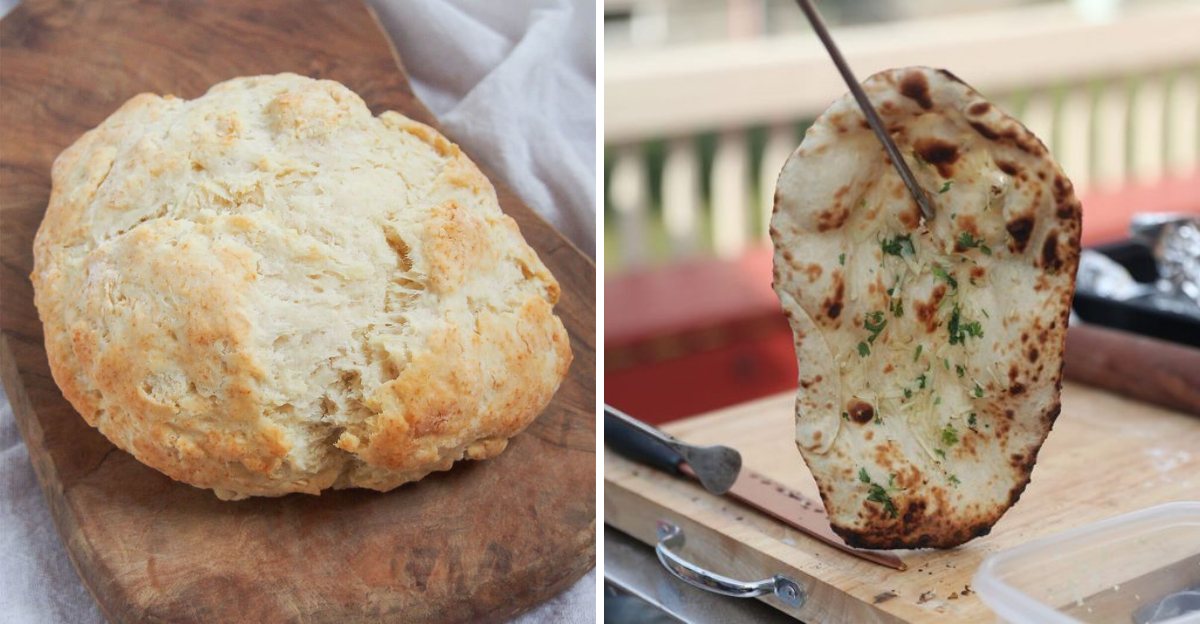
Bread, a staple food across cultures, comes in myriad forms, each with a unique taste, texture, and story. From the tangy allure of sourdough to the soft elegance of Japanese milk bread, the world offers a delicious spectrum of breads. In this journey through the top 35 most delicious breads, we’ll explore what makes each one special and why it holds a cherished place in hearts and kitchens worldwide.
1. Sourdough (USA/Europe)
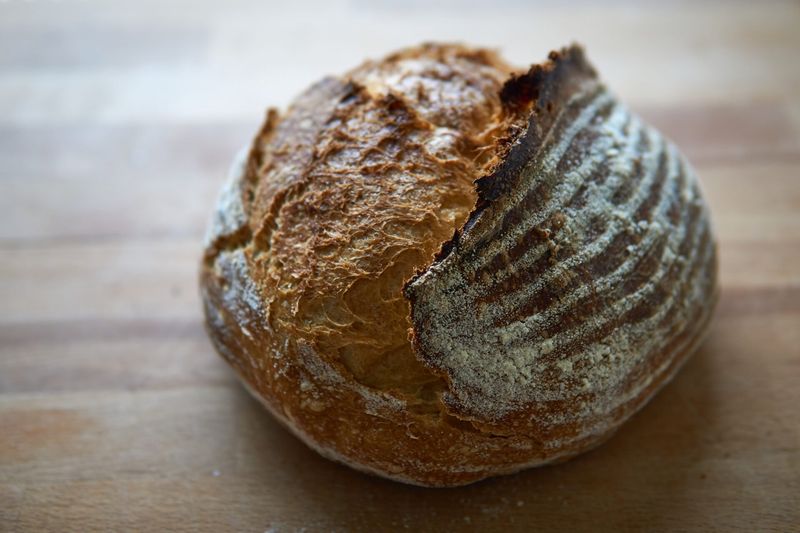
Sourdough, with its tangy flavor and chewy crust, reigns supreme in many kitchens. Its versatility allows it to shine as toast, a sandwich base, or simply fresh with butter. This bread’s unique taste comes from natural fermentation, a method that has been cherished for centuries. The chewy texture and rich flavor profile make it a favorite among bread enthusiasts. Whether paired with savory toppings or enjoyed on its own, sourdough offers a comforting experience. This bread’s resilience and flavor complexity are a testament to its enduring popularity in both Europe and the USA.
2. Baguette (France)
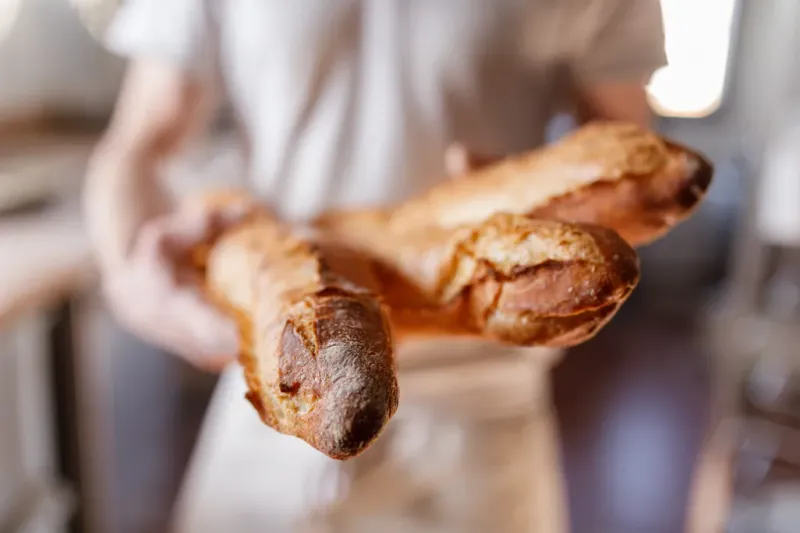
In France, the baguette is more than just bread; it’s an emblem of French culture. With its crunchy crust and soft interior, it elevates any meal from ordinary to extraordinary. Whether paired with cheese, butter, or enjoyed solo, its simplicity is its true elegance. The art of crafting a perfect baguette involves time-honored techniques passed down through generations. The crisp sound of breaking into a fresh baguette is music to any bread lover’s ears. It’s a staple in French households and a must-try for anyone exploring global culinary delights.
3. Naan (India)
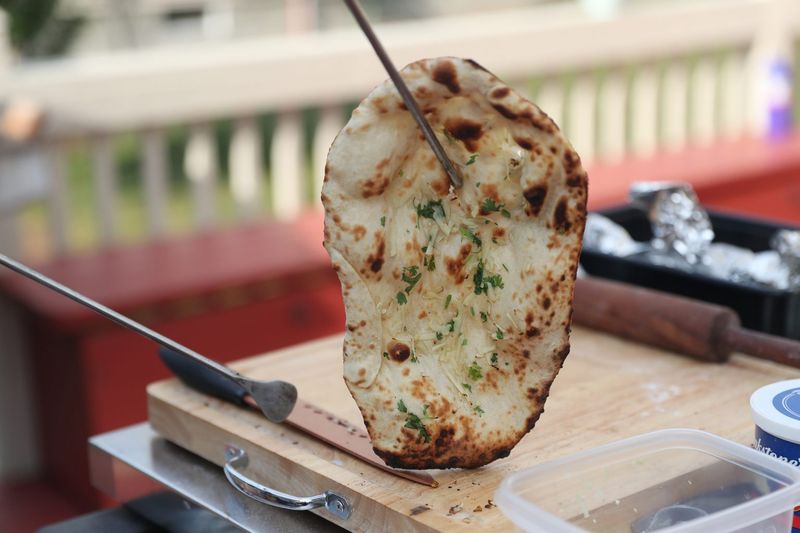
Naan is the buttery, pillowy flatbread that’s an essential companion to Indian curries. Fresh from the tandoor, its soft, chewy texture is perfect for scooping up flavorful sauces. Garlic naan, with its aromatic touch, turns every bite into an addictive experience. This bread’s roots in Indian cuisine make it a beloved staple across the subcontinent and beyond. Whether plain or adorned with herbs, naan’s comforting presence on the table is undeniable. Its versatility and warmth make it a cherished part of any meal, offering a taste of India’s rich culinary heritage.
4. Ciabatta (Italy)
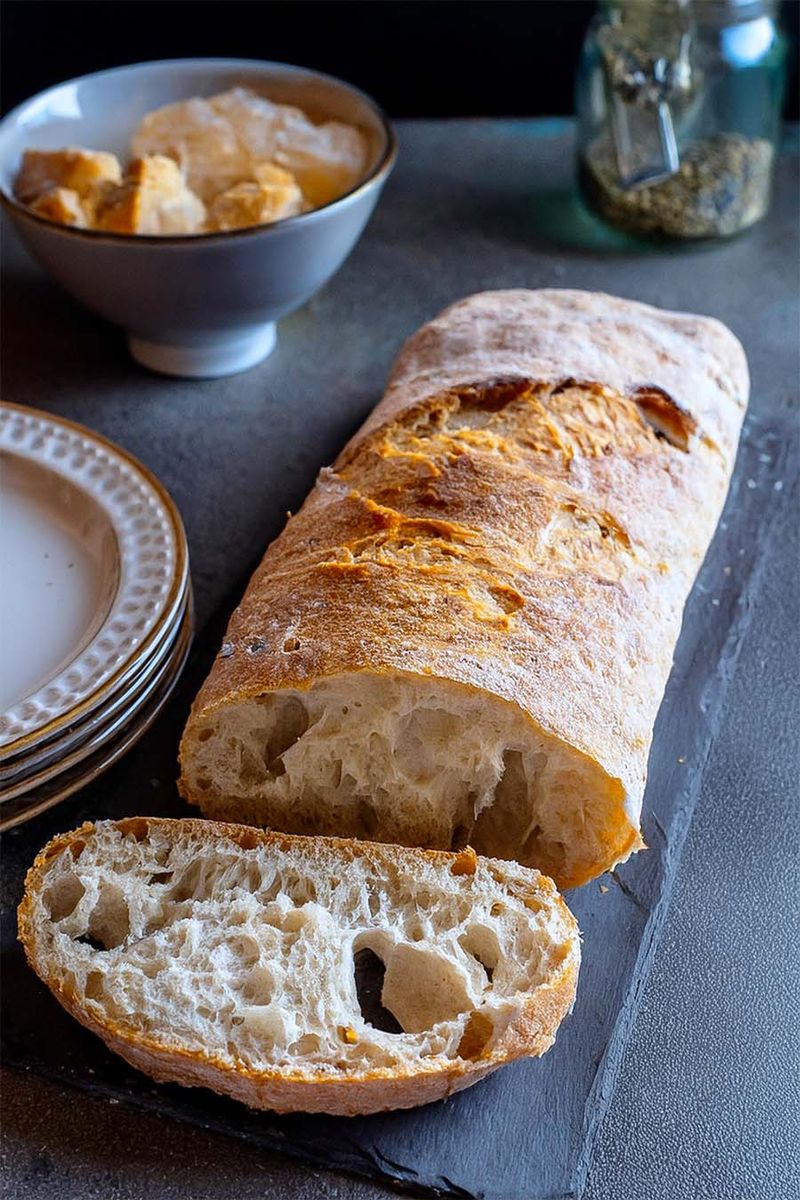
Ciabatta, with its rustic charm and airy texture, is a beloved Italian bread that’s ideal for sandwiches and dipping. Its soft interior and crispy crust provide a delightful contrast in every bite. This bread’s name, meaning ‘slipper’ in Italian, and its shape reflect its humble origins. Perfect for paninis or simply enjoyed with olive oil, ciabatta’s adaptability makes it a kitchen favorite. Its creation in the 1980s adds a modern twist to Italy’s rich bread-making tradition. The joy of biting into ciabatta is a culinary experience that captures the essence of Italian simplicity.
5. Pita (Middle East)
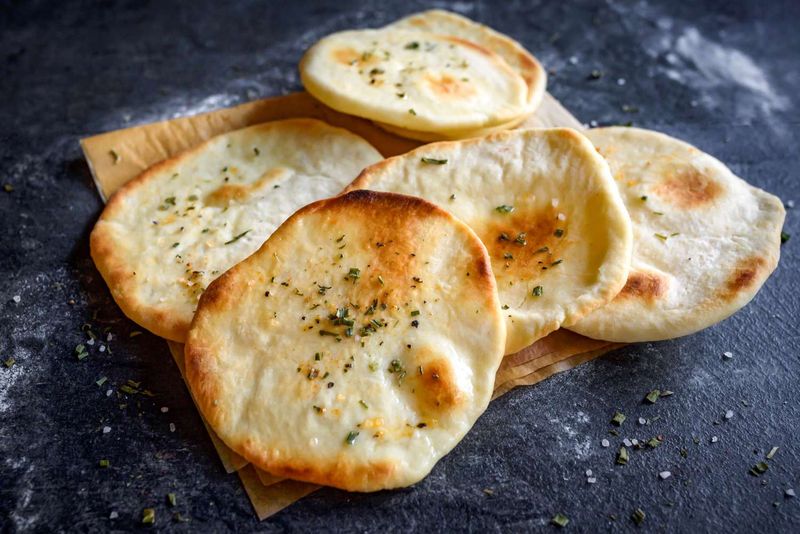
Pita bread, with its magical pocket, is a versatile star in Middle Eastern cuisine. This soft, round bread opens up to hold falafel, meats, or fresh vegetables, making it perfect for wraps. Its origins trace back to ancient civilizations, where it served as both utensil and meal. The simplicity of pita’s ingredients—flour, water, yeast—belies its capacity to transform any meal. Whether stuffed or torn and dipped in hummus, pita’s role on the table is indispensable. Its utility and flavor have ensured its place in kitchens far beyond the Middle East.
6. Brioche (France)
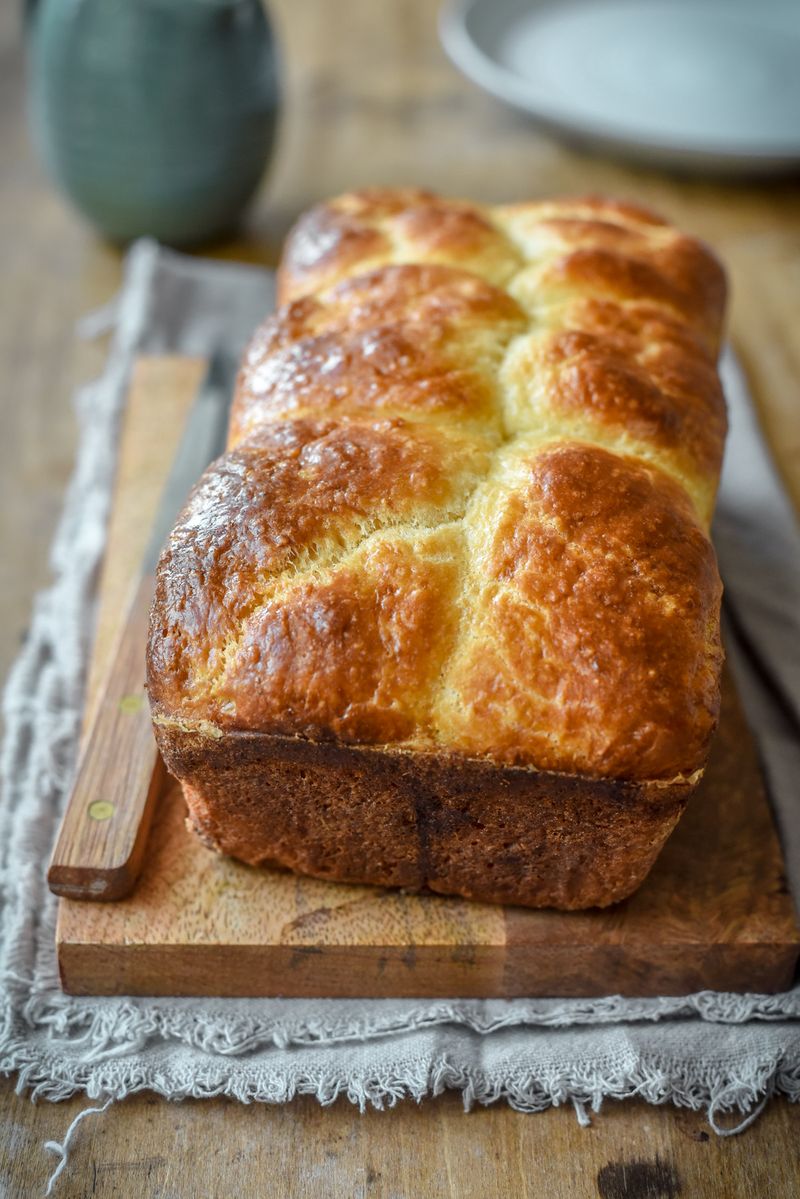
Brioche is a French delight rich with eggs and butter, giving it a golden hue and tender crumb. This bread’s luxurious texture makes it ideal for French toast or simply pulling apart with your hands. Beyond its taste, brioche’s aesthetic appeal lies in its glossy, egg-washed top. Originating in France, this bread is often associated with celebrations and special occasions. Its richness complements sweet and savory toppings alike, from jam to pâté. Every bite of brioche is a reminder of France’s culinary artistry and love for indulgence in everyday moments.
7. Challah (Jewish Tradition)
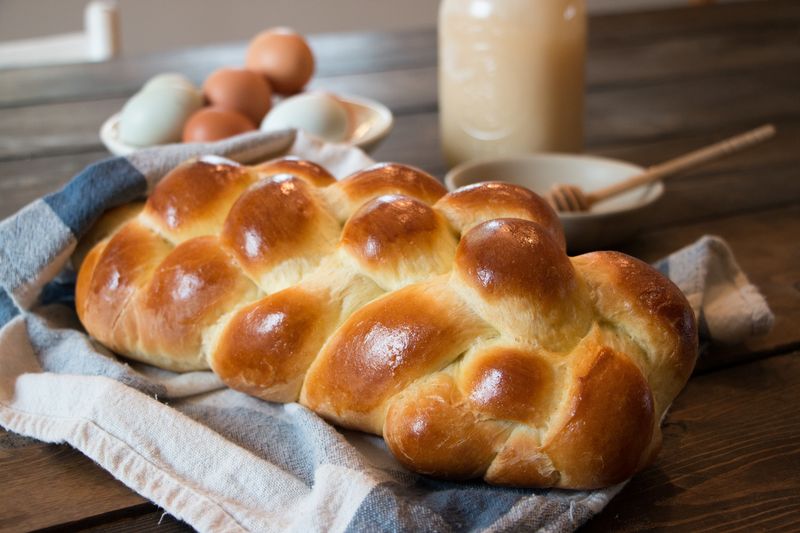
Challah, with its sweet, eggy flavor, is more than just bread; it’s a symbol of Jewish tradition. Braided with love, it graces tables during holidays and special occasions. The braid represents unity and continuity, reflecting its cultural significance. Whether enjoyed plain or with a dollop of jam, challah’s soft, pillowy texture is heartwarming. Its golden crust and tender interior are achieved through a rich dough containing eggs, sugar, and oil. The tradition of baking challah is often a communal activity, bringing families together in shared heritage and joy.
8. Focaccia (Italy)
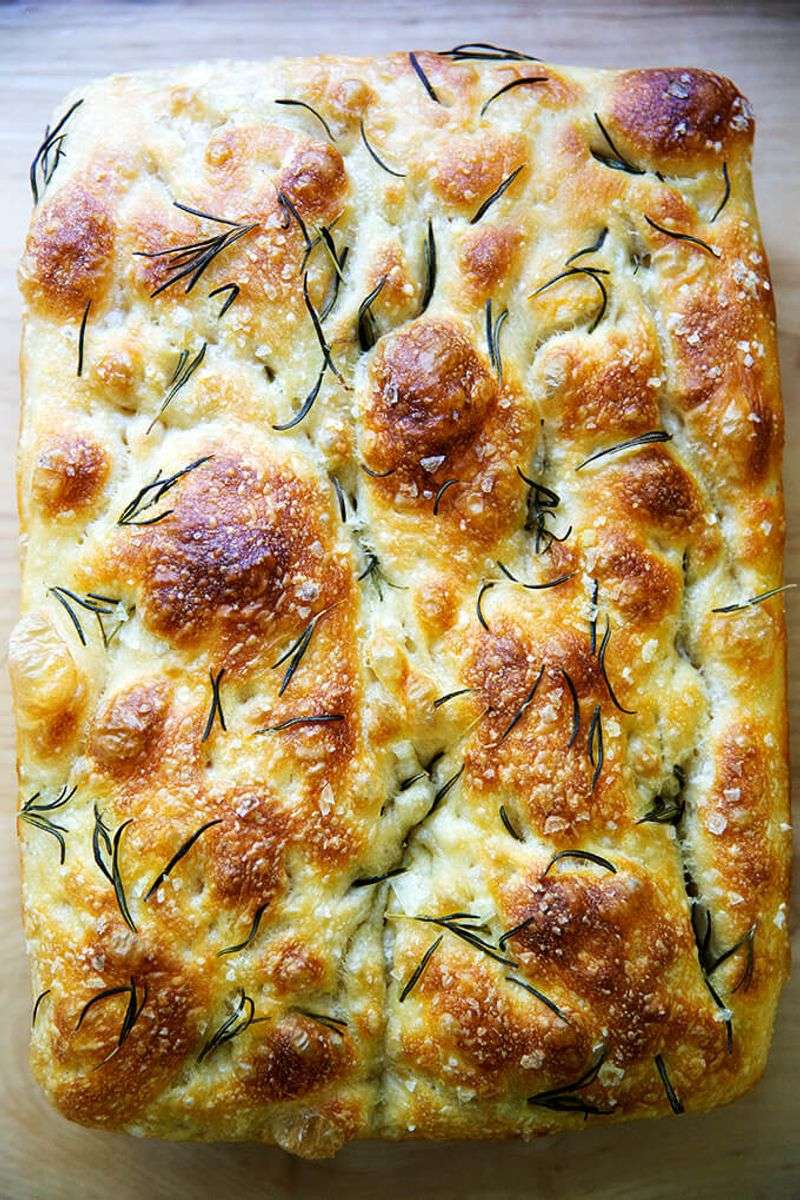
Focaccia is Italy’s olive oil-soaked wonder, known for its crispy edges and soft interior. Often studded with rosemary, tomatoes, or olives, it offers a burst of flavors in every bite. This bread’s dimpled surface is not just for aesthetics; it helps hold the flavorful toppings. Originating from ancient Roman times, focaccia has evolved into a gourmet delight. Its versatility as a side dish or snack makes it a popular choice in Italian cuisine. Whether enjoyed plain or with a creative twist, focaccia’s savory goodness is irresistible and authentically Italian.
9. Arepa (Venezuela/Colombia)
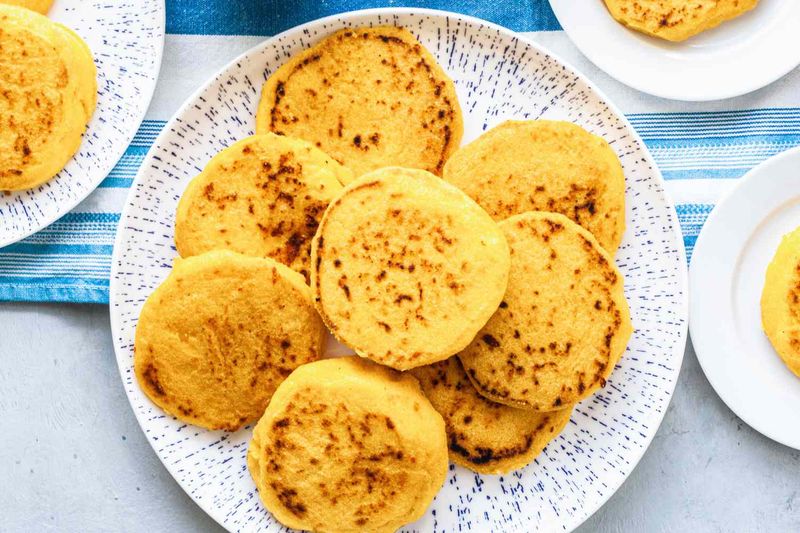
The arepa is a unique cornmeal-based bread cherished in Venezuela and Colombia. Naturally gluten-free, it offers a delightful option for those with dietary restrictions. Grilled, baked, or fried, arepas serve as a versatile base for various fillings such as cheese, meats, or avocado. This bread’s origins date back to pre-Columbian times, reflecting its deep cultural roots. The crispy exterior and soft interior make it a comforting choice for breakfast, lunch, or dinner. Arepas symbolize a harmonious blend of tradition and modern culinary innovation, beloved by people of all ages.
10. Paratha (India)
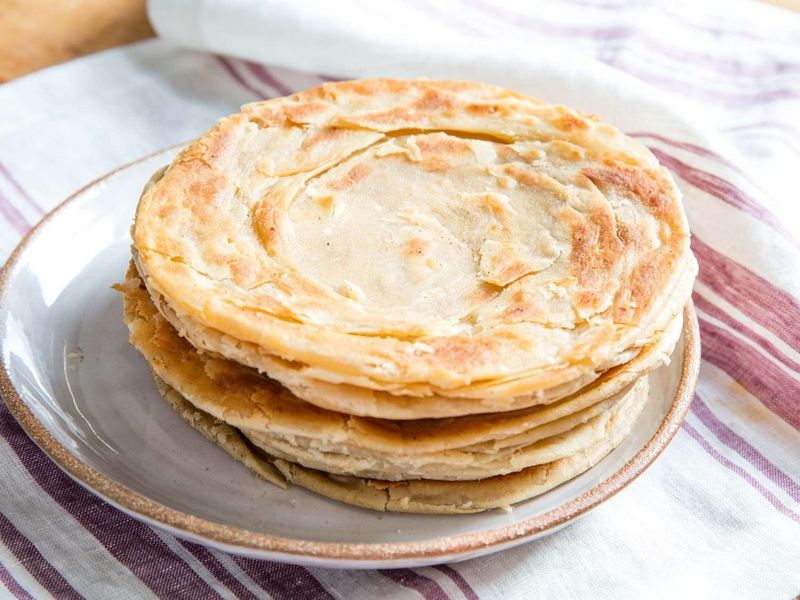
Paratha is a flaky, layered flatbread that’s a beloved part of Indian cuisine. Often stuffed with potatoes or paneer, it transforms into a meal in itself. Cooked on a hot griddle with ghee, parathas offer a comforting, hearty bite. Their versatility allows for endless variations, from plain to stuffed with an array of fillings. Eaten at breakfast or as part of a larger meal, parathas are universally adored. The process of making parathas involves skillful rolling and cooking, a dance of flavors and textures that celebrates India’s rich culinary traditions.
11. Pretzel Bread (Germany)
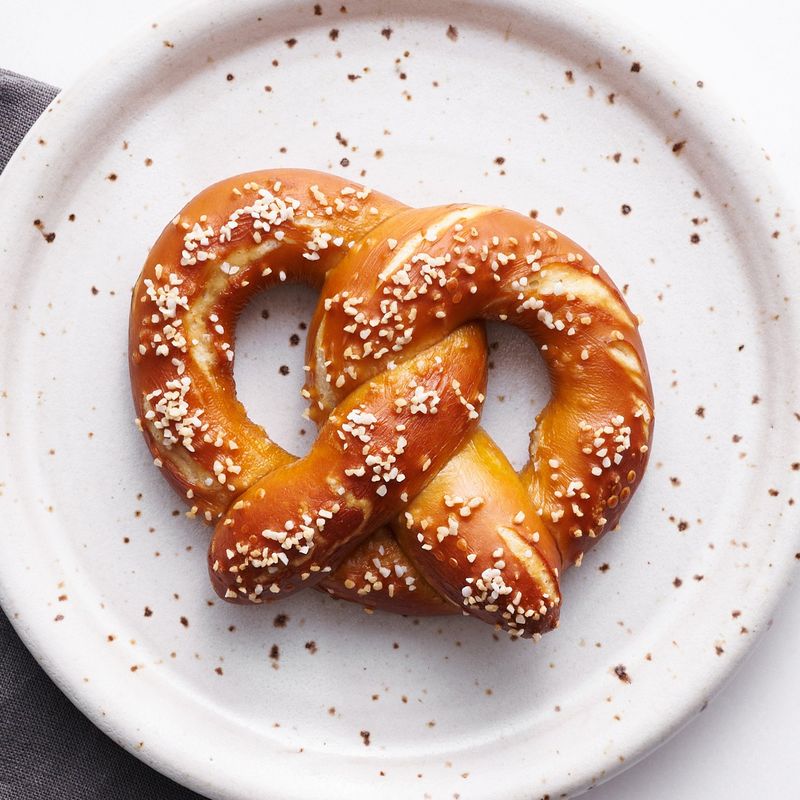
Pretzel bread, with its shiny, salty crust, is a German classic that captures the heart. Whether in roll or knot form, its soft center and distinctive flavor make it a crowd-pleaser. The baking process involves boiling the dough in a baking soda solution, giving it the iconic color and taste. Ideal for sandwiches or enjoyed as a snack, pretzel bread’s appeal is universal. Its satisfying chew and rich taste reflect the meticulous craftsmanship of German bakers. This bread’s unique texture and flavor have made it a favorite far beyond its origins.
12. Pan de Bono (Colombia)
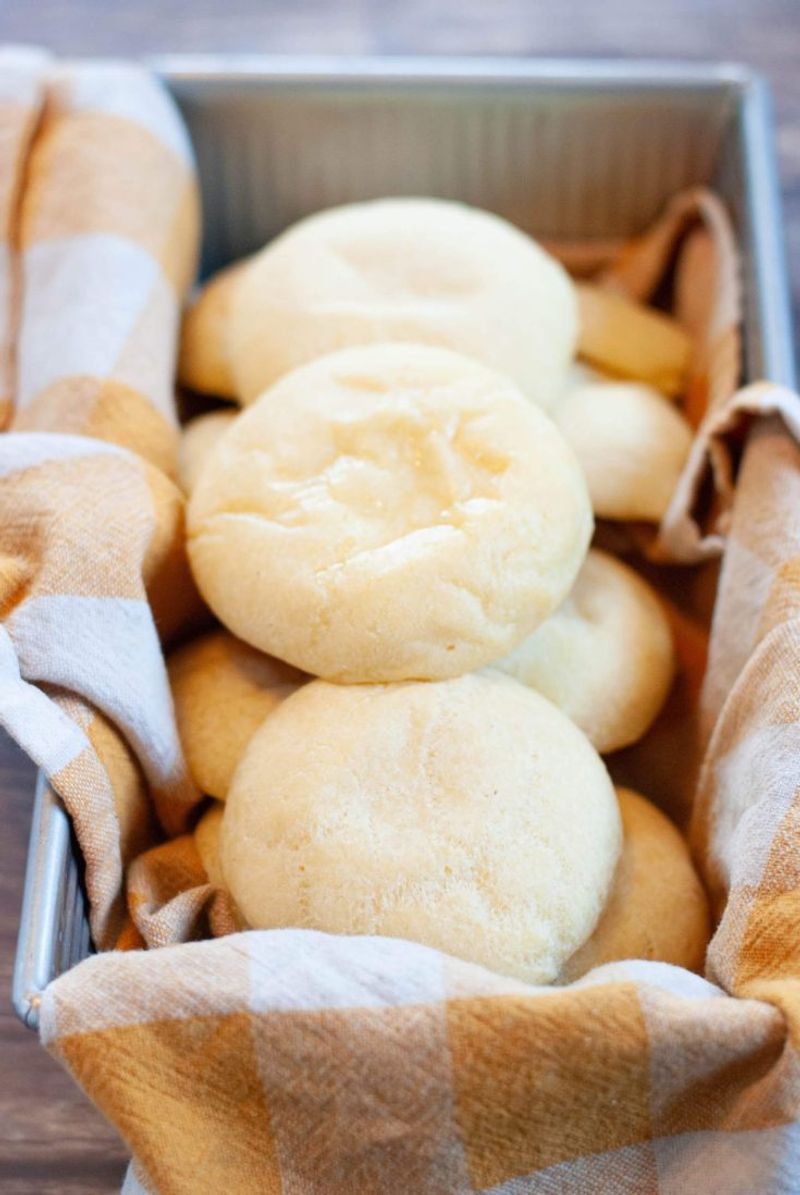
Pan de Bono is a cheesy delight from Colombia, known for its chewy texture and scrumptious flavor. Made with yuca flour, these rolls are naturally gluten-free and offer a slightly sweet taste. They are a staple in Colombian bakeries, enjoyed with coffee or as a snack. The combination of yuca flour and cheese creates a unique bread that is both satisfying and addictive. Often served warm, pan de bono’s appeal lies in its simplicity and rich taste. This bread’s harmonious blend of flavors is a testament to Colombia’s inventive culinary traditions.
13. Injera (Ethiopia)
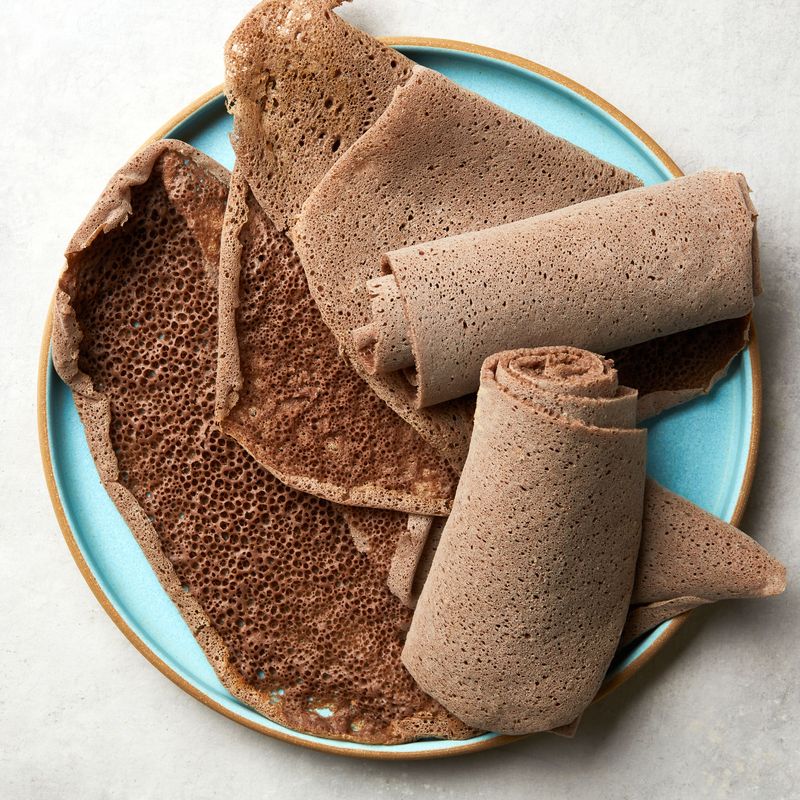
Injera is more than just bread in Ethiopia; it’s an integral part of every meal. With a sour, spongy texture, it doubles as both food and utensil. Made from teff flour, injera’s health benefits are as noteworthy as its taste. Its unique flavor and texture come from a fermentation process that creates its signature tang. Used to scoop up stews and sauces, injera transforms dining into a communal experience. This bread’s cultural importance is matched by its culinary appeal, making it a beloved staple in Ethiopian households and beyond.
14. Cornbread (USA)
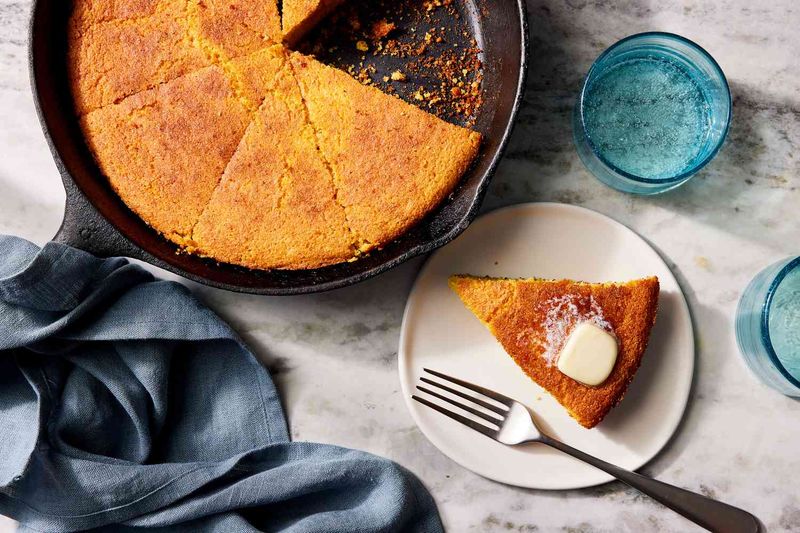
Cornbread is a soul food essential in the USA, offering a comforting bite that’s both savory and sweet. Made from cornmeal, its crumbly texture and golden hue are instantly recognizable. This bread’s versatility shines in various dishes, from chili accompaniments to sweet, buttered slices. Cornbread’s roots in Native American cuisine highlight its historical significance and enduring popularity. Whether baked in a skillet or oven, its warm, inviting aroma is irresistible. The simplicity of ingredients combined with rich flavors makes cornbread a cherished staple across generations.
15. Lavash (Armenia/Middle East)
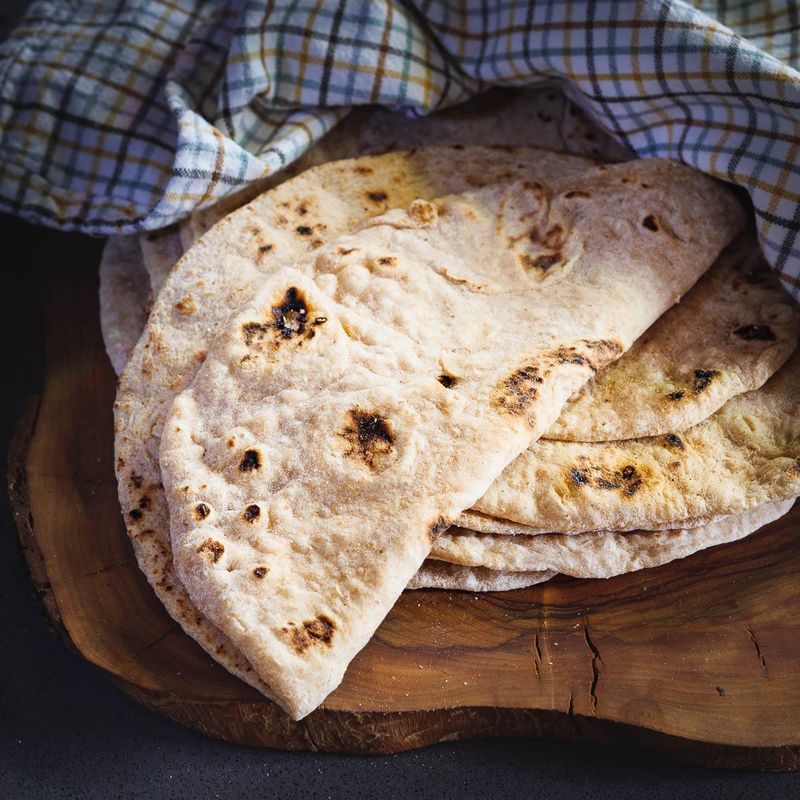
Lavash is a thin, soft bread that holds a special place in Armenian and Middle Eastern cuisines. Its pliability makes it perfect for wraps, offering a versatile base for various fillings. This bread’s ancient origins reflect its enduring presence in culinary traditions. Often served with dips, meats, or vegetables, lavash is a staple at many tables. Its simplicity and adaptability make it a beloved bread for everyday meals. Whether enjoyed fresh or dried for later use, lavash’s role in enhancing flavors and textures is unmatched, embodying a rich cultural heritage.
16. Tsoureki (Greece)
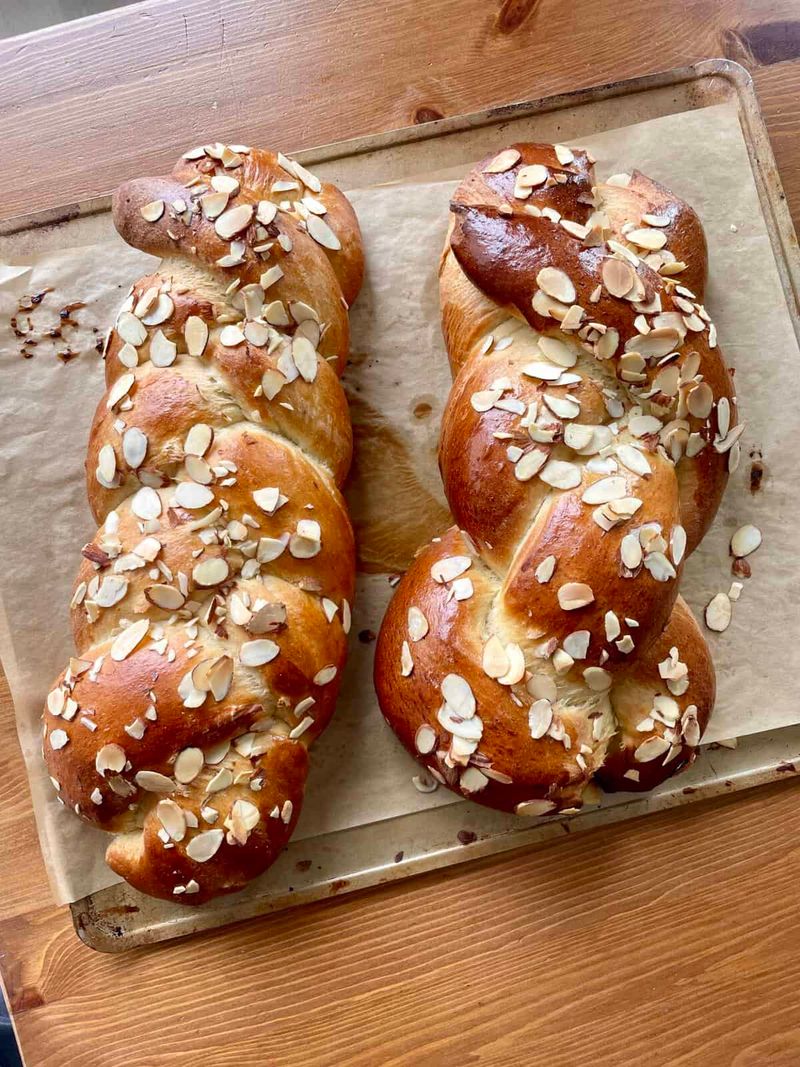
Tsoureki is Greece’s sweet, aromatic bread, often made during Easter but delicious year-round. Hints of orange or mahleb give it a distinctive flavor that captivates taste buds. This braided loaf symbolizes renewal and celebration, adding joy to festive occasions. Beyond its taste, tsoureki’s visual appeal lies in its intricate braiding and glossy finish. Whether enjoyed plain or with a touch of butter, its rich texture is delightful. Tsoureki’s unique blend of flavors and cultural significance makes it a cherished part of Greek culinary traditions, enjoyed by families across generations.
17. Bao (China)
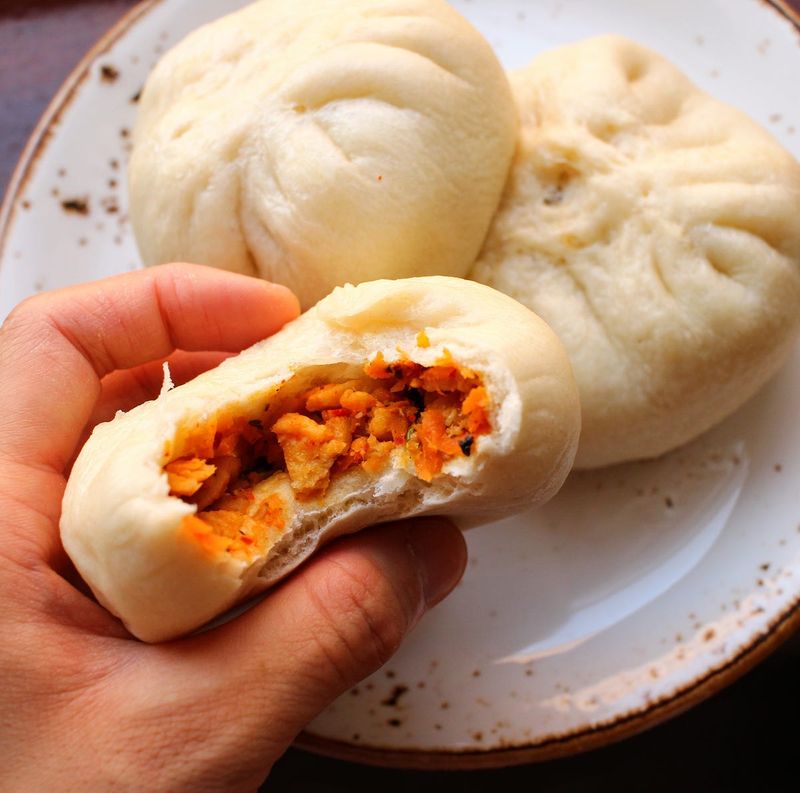
Bao, the iconic steamed bun from China, offers a soft, fluffy texture that’s utterly addictive. Filled with savory or sweet fillings, baos are a culinary delight that satisfies on every level. This bread’s origins in Chinese dim sum culture highlight its role in communal dining. Whether filled with barbecue pork or custard, baos are a testament to culinary creativity. The steaming process gives these buns a unique texture and taste, making them a favorite snack or meal. Bao’s versatility and delectable flavors have made it a global phenomenon.
18. Pan de Muerto (Mexico)
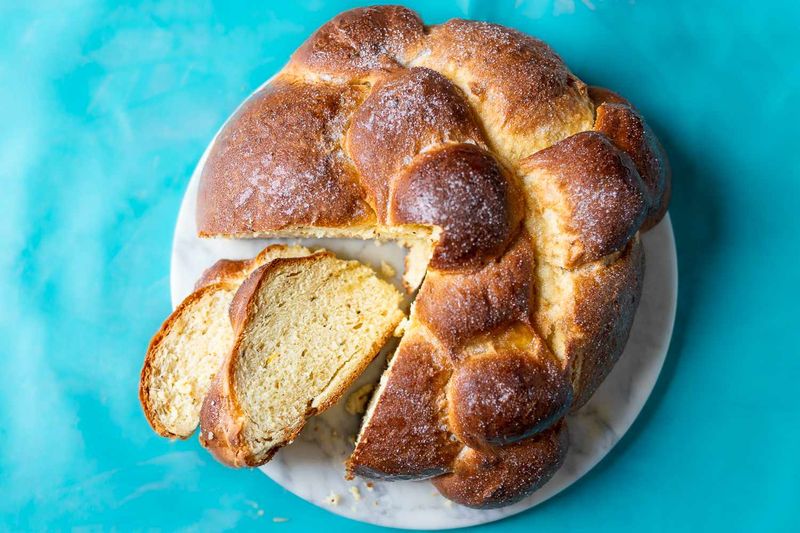
Pan de Muerto is more than just bread; it’s a cultural symbol in Mexico, especially during Día de los Muertos. This soft, sweet bread is rich with orange and anise flavors, capturing the essence of celebration and remembrance. The unique decorations atop each loaf represent bones, tying the bread to its spiritual significance. Pan de Muerto’s tender crumb and aromatic taste make it a beloved treat during the holiday. Its role in honoring loved ones adds to its emotional and culinary appeal. It’s a delicious reminder of life’s sweetness and the memories we cherish.
19. Crumpets (UK)
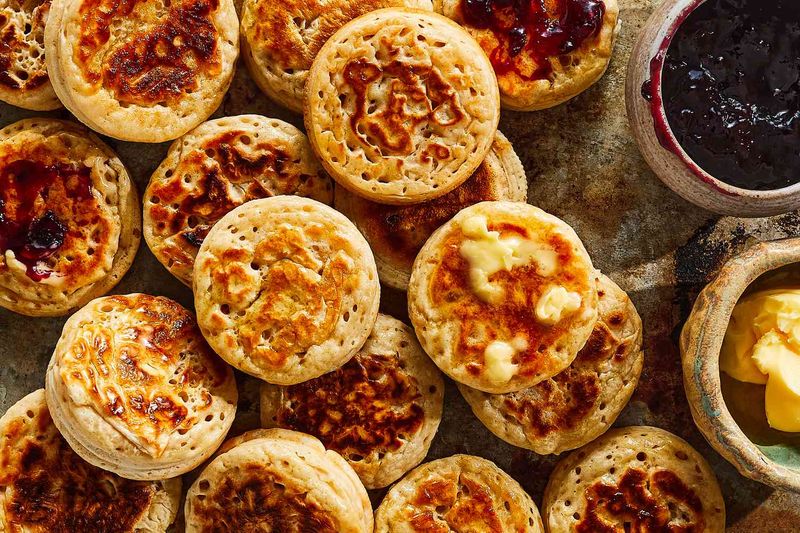
Crumpets, with their spongy texture and signature holes, are a quintessential British treat. Perfect for soaking up butter and jam, they offer a comforting, warm bite. These griddle-cooked delights are often enjoyed during tea time, embodying British culinary traditions. The porous surface of a crumpet is designed to capture flavors, making it a perfect partner for sweet or savory toppings. Whether toasted or fresh, crumpets bring a cozy charm to any table. Their unique texture and taste make them a beloved snack, drawing parallels with pancakes in their comforting simplicity.
20. Anpan (Japan)
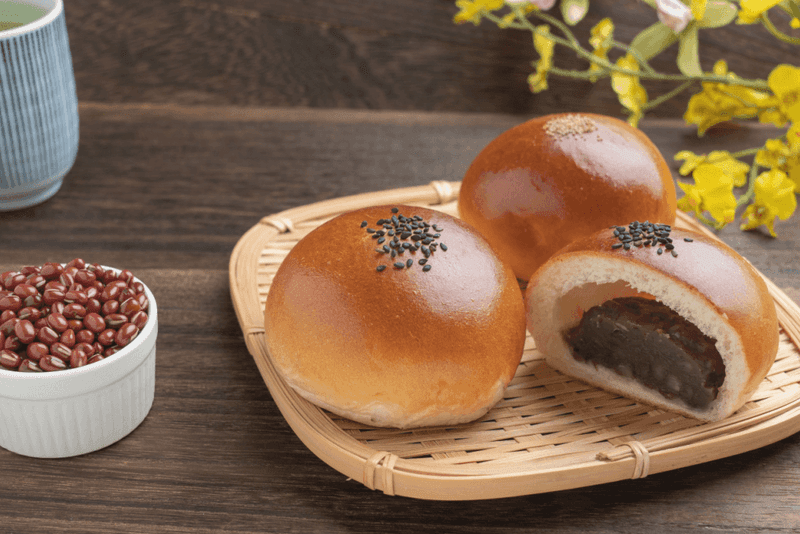
Anpan is Japan’s answer to a sweet, tender bread filled with delightful surprises. This soft milk bread envelops a sweet red bean paste, creating a harmonious balance of flavors. Its origins trace back to the late 1800s, when a samurai-turned-baker introduced this Japanese-European fusion. The gentle sweetness and fluffy texture make anpan a popular choice for breakfast or snack time. Each bite offers a glimpse into Japan’s rich culinary history, merging simplicity with innovation. Anpan’s cultural significance and irresistible taste make it a beloved treat across generations in Japan.
21. Pão de Queijo (Brazil)
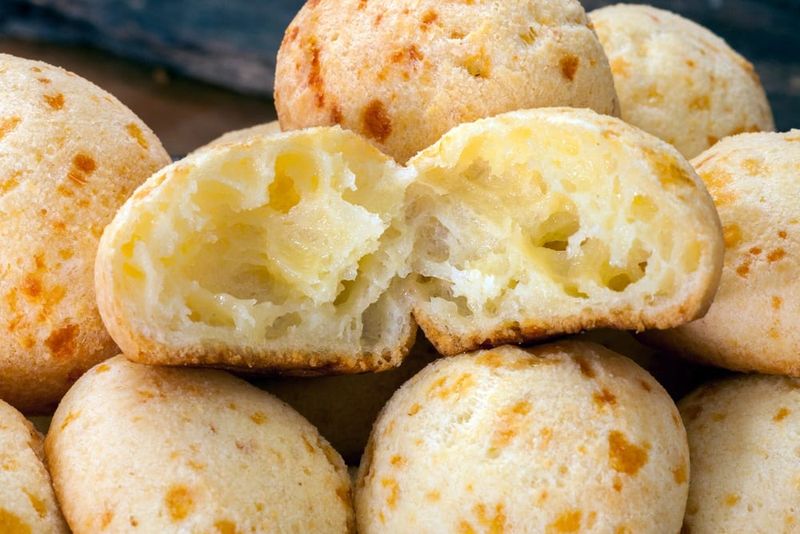
Pão de Queijo is Brazil’s cheesy little bread that delights with every bite. Made from tapioca flour, these gluten-free gems offer a chewy texture and rich flavor. Often served as a snack or breakfast item, they pair perfectly with coffee. The combination of cheese and bread creates an irresistible treat that satisfies cravings. Pão de Queijo’s unique taste and texture make it a staple in Brazilian households and cafes. This bread’s appeal lies in its simplicity and the joy it brings to everyday moments, capturing the essence of Brazilian warmth and hospitality.
22. Lefse (Norway)
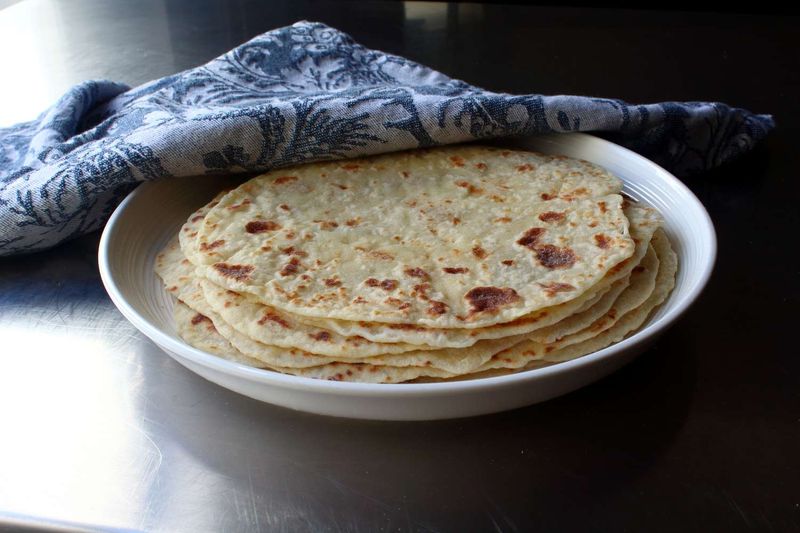
Lefse is Norway’s tender potato flatbread, often spread with butter and sugar before being rolled up. This bread’s soft, delicate texture offers a comforting bite reminiscent of home. Traditionally made during festive occasions, lefse holds a special place in Norwegian hearts. Its simple ingredients, including potatoes, flour, and cream, create a harmonious blend of flavors. Whether enjoyed as a sweet treat or savory snack, lefse’s versatility is unmatched. This bread’s cultural significance and delightful taste make it a beloved part of Norway’s culinary landscape, cherished by families across generations.
23. Khachapuri (Georgia)
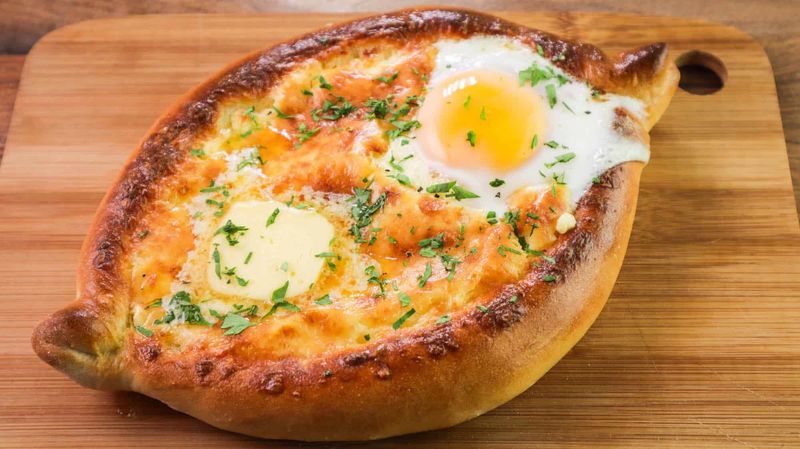
Khachapuri is Georgia’s irresistible cheese-filled bread, often topped with a runny egg for added indulgence. This bread’s rich, gooey center offers a luscious experience that satisfies every craving. The combination of freshly baked dough and melted cheese creates a harmonious symphony of flavors. Khachapuri’s origins are deeply rooted in Georgian culture, where it symbolizes hospitality and warmth. Whether served as an appetizer or main dish, this bread’s appeal is universal. Its unique blend of textures and flavors makes khachapuri a culinary icon, enjoyed by food lovers around the world.
24. Mantou (China)
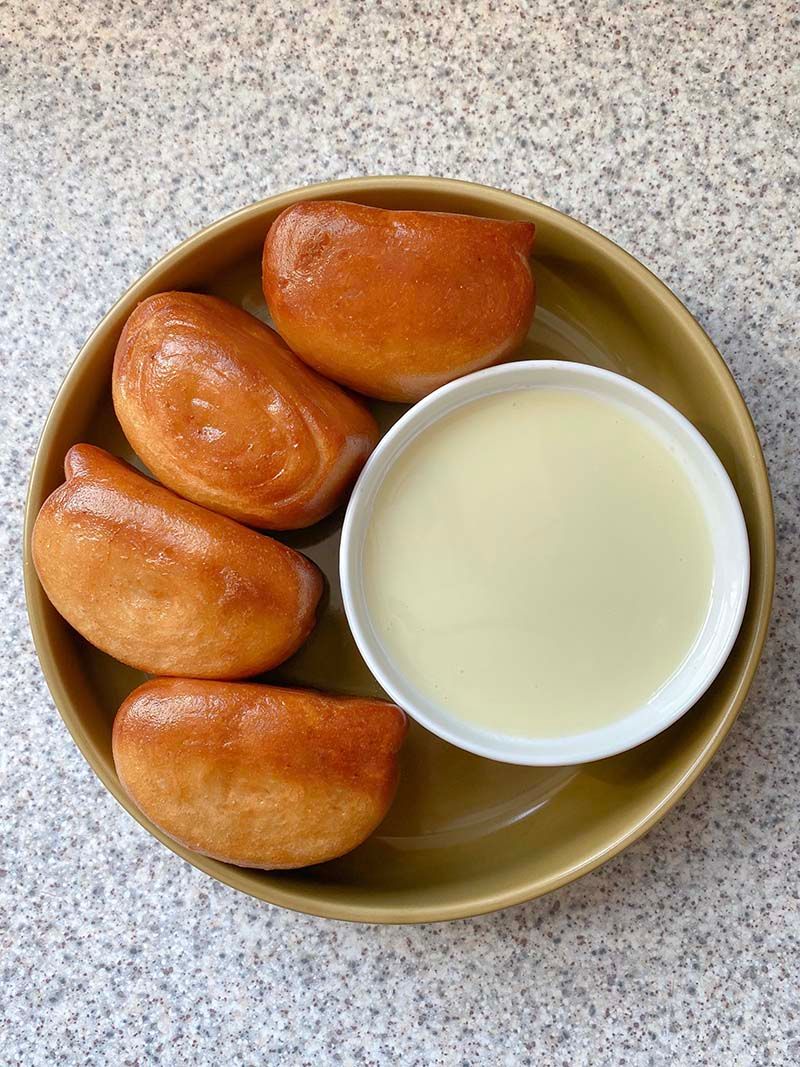
Mantou, China’s plain steamed bun, offers a soft, pillowy texture that’s both comforting and satisfying. Often served alongside savory dishes, mantou is a versatile staple in Chinese cuisine. Its simplicity is its strength, allowing the natural sweetness of the dough to shine. Whether paired with sauces, meats, or enjoyed plain, mantou’s subtle flavor enhances any meal. The steaming process gives these buns their signature lightness and softness. Mantou’s role as a beloved side dish or snack highlights its importance in everyday Chinese dining and its place in culinary traditions.
25. Panettone (Italy)
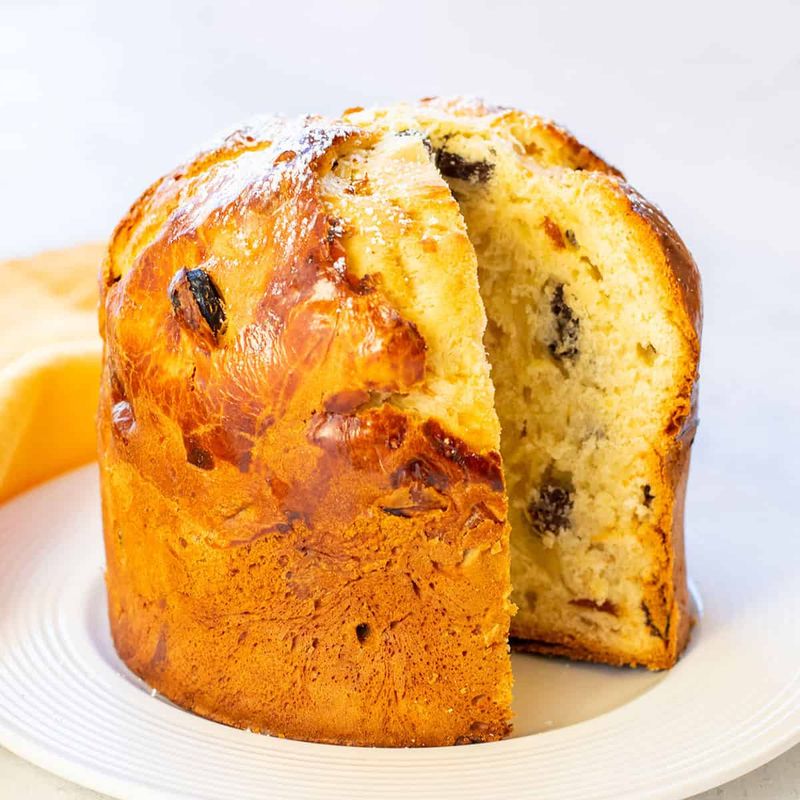
Panettone is Italy’s holiday bread, towering with dried fruit and a fluffy, light texture. Often enjoyed during Christmas, this sweet bread embodies festive cheer and tradition. Its origins trace back to Milan, where it became a symbol of holiday celebrations. The combination of candied fruits and soft dough creates a delightful contrast in every bite. Panettone’s versatility allows it to be enjoyed fresh or toasted, with coffee or dessert wine. Its rich history and delectable taste make panettone a cherished part of Italian culinary heritage, bringing warmth and joy to holiday tables.
26. Irish Soda Bread (Ireland)
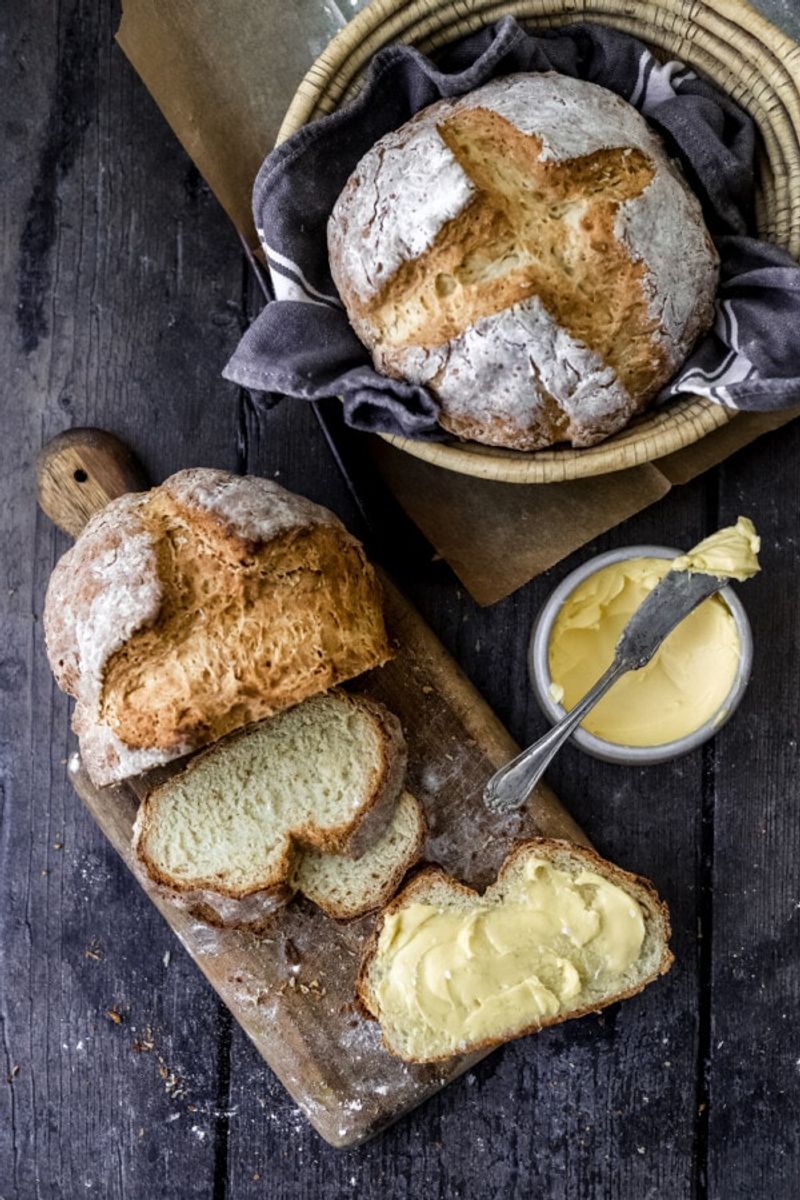
Irish Soda Bread, with its dense, rustic texture, is a beloved staple in Ireland. Made with baking soda and buttermilk, this bread offers a slightly tangy flavor that complements its hearty crumb. The cross cut on top is both traditional and functional, helping the bread bake evenly. Served with butter, it’s the perfect accompaniment to soups and stews. Irish Soda Bread’s simplicity and wholesome taste make it a favorite in homes across Ireland and beyond. Its rich cultural heritage and comforting flavors continue to captivate bread lovers around the world.
27. Tortilla (Mexico)
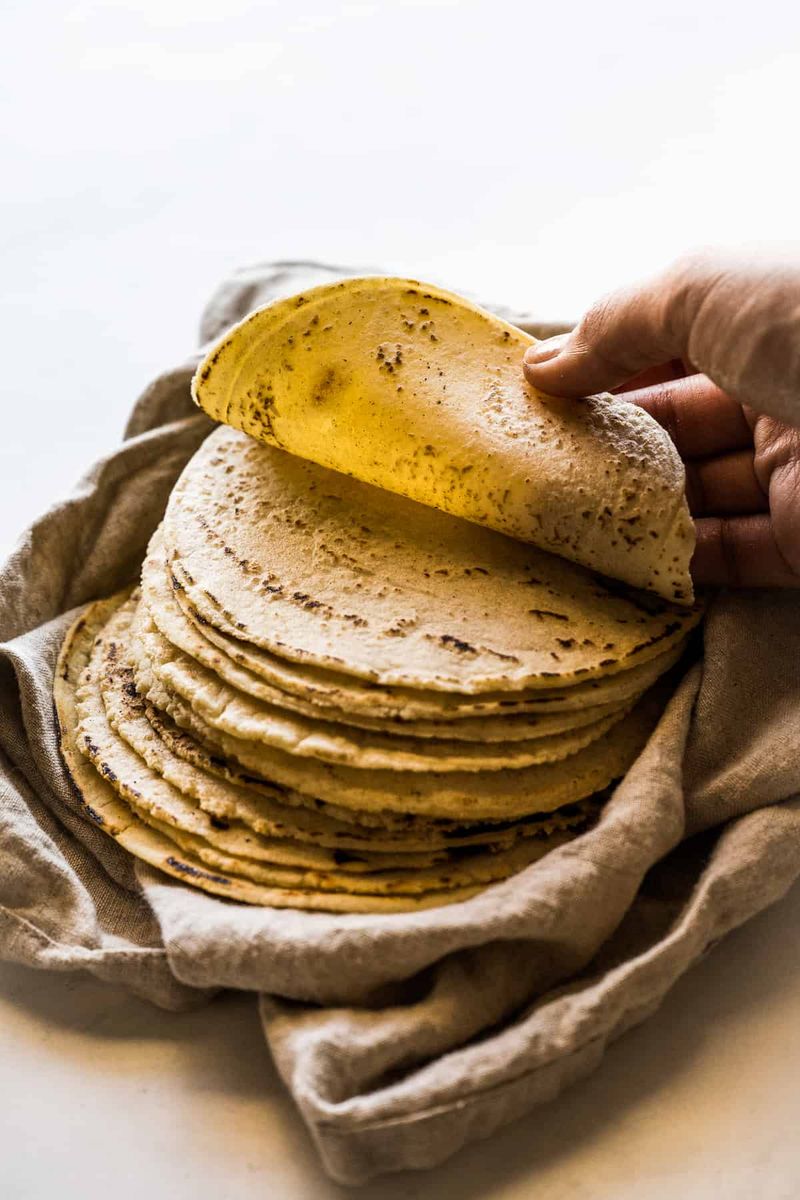
Tortillas are the cornerstone of Mexican cuisine, offering a soft, pliable base for countless dishes. From tacos to quesadillas, a well-made tortilla is essential for authentic Mexican flavors. Made from corn or flour, tortillas capture the essence of Mexico’s culinary heritage. Their versatility allows them to complement both savory and sweet fillings, making them a beloved staple. The process of making tortillas, often by hand, is a time-honored tradition. Whether enjoyed fresh or toasted, tortillas’ ability to enhance any meal is unmatched. Their role in Mexican culture and cuisine is truly indispensable.
28. Yufka (Turkey)
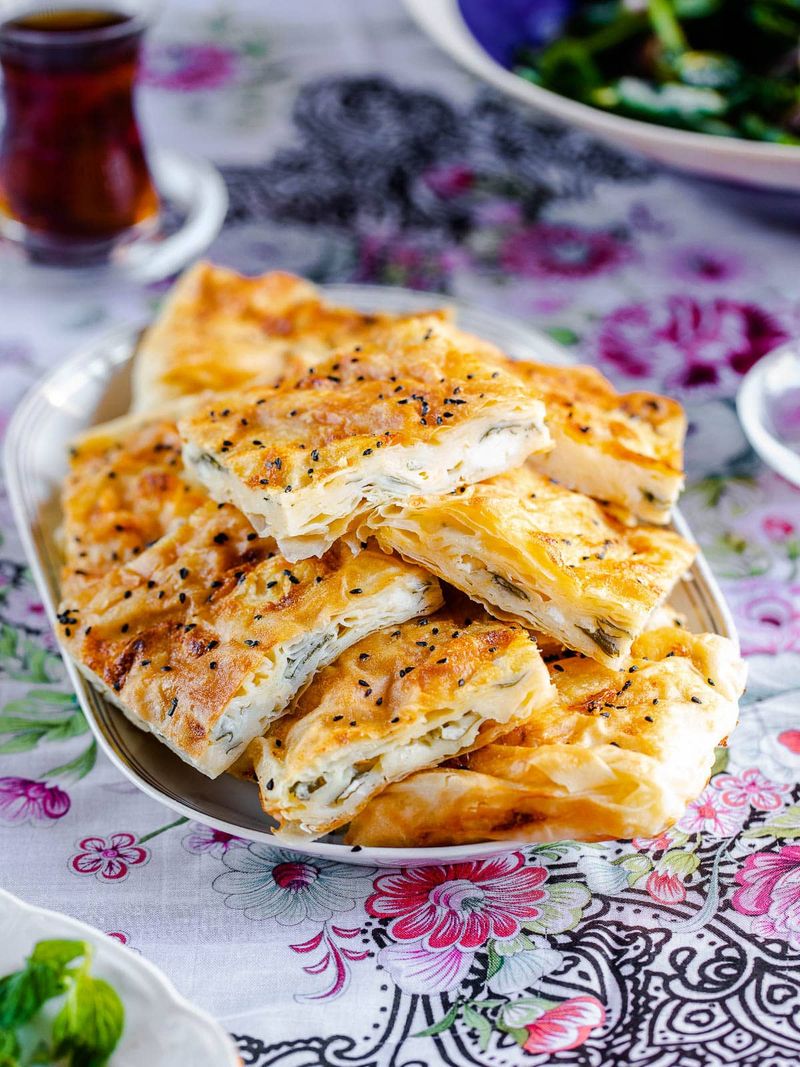
Yufka, Turkey’s paper-thin pastry, is the foundation for savory delights like börek. Its delicate texture and versatility make it a beloved ingredient in Turkish cuisine. Layered with fillings such as cheese, spinach, or meat, yufka transforms into savory pastry perfection. The art of making yufka involves skill and precision, often passed down through generations. Whether used in savory pies or sweet desserts, its adaptability is key to its popularity. Yufka’s role in creating culinary masterpieces reflects Turkey’s rich food culture, making it a cherished component of many traditional dishes.
29. Pumpernickel (Germany)
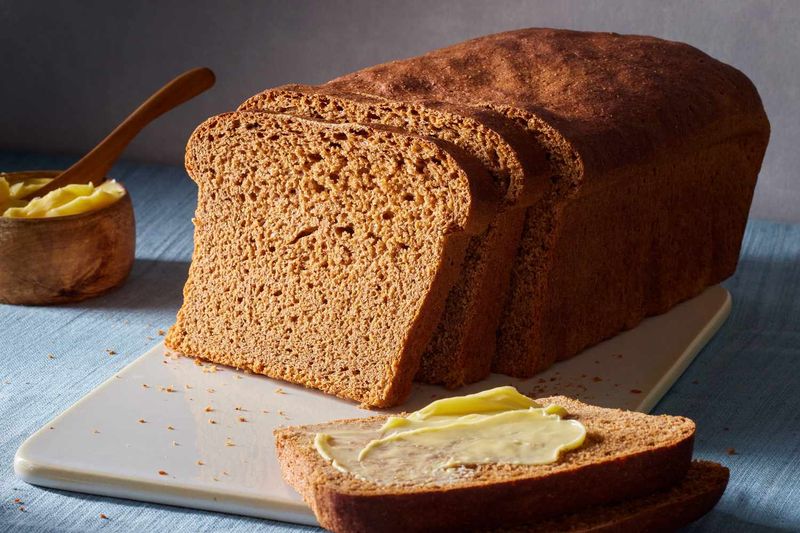
Pumpernickel is Germany’s dense, dark bread, rich with rye flavor and history. Its long baking process gives it a distinctive taste and texture, often enjoyed with butter or smoked fish. The deep, earthy flavor of pumpernickel is a testament to traditional German baking techniques. This bread’s hearty, satisfying bite makes it a favorite for sandwiches or alongside hearty soups. Pumpernickel’s unique characteristics and robust taste highlight the craftsmanship involved in its creation. Its role in German cuisine and beyond showcases its timeless appeal and culinary versatility.
30. Rosca de Reyes (Latin America)
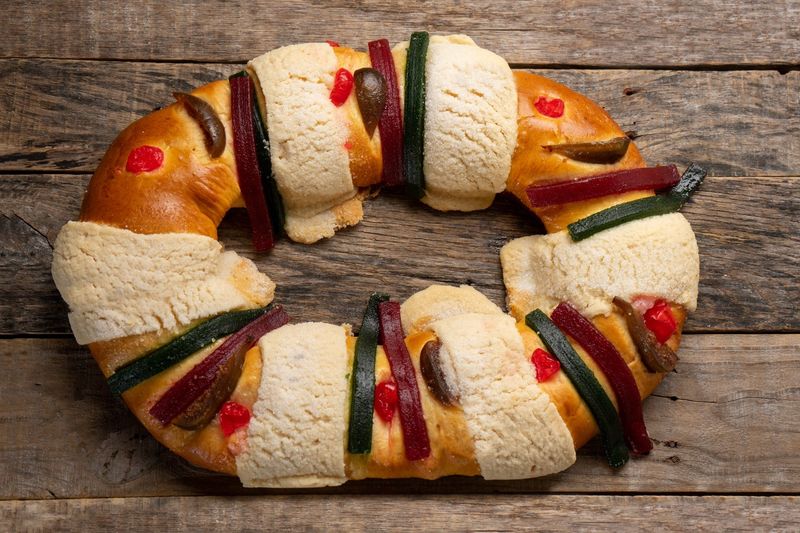
Rosca de Reyes is a festive bread enjoyed across Latin America during Epiphany. Shaped like a ring and adorned with dried fruits, it symbolizes unity and celebration. The decoration and flavors of this bread make it a highlight of holiday festivities. A small figurine hidden inside adds an element of surprise, inviting families to share in the joy of discovery. Rosca de Reyes’ sweet, rich taste captures the essence of celebration and tradition. This bread’s role in bringing families together makes it a cherished part of cultural heritage, enjoyed by all ages.
31. Tiger Bread (Netherlands)
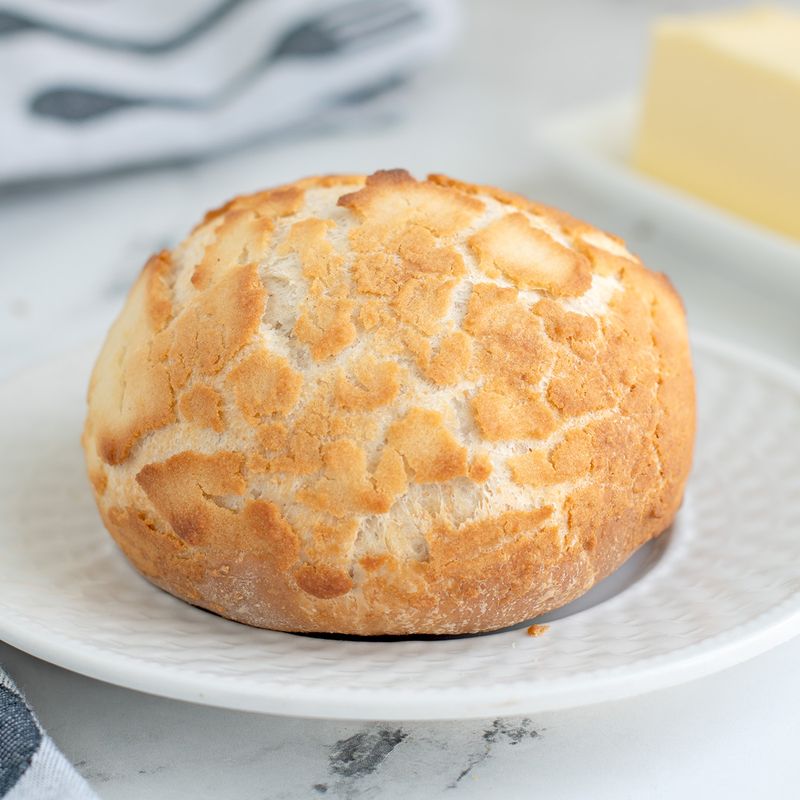
Tiger Bread, known for its crackled crust, is a Dutch favorite that pairs beautifully with any meal. The unique crust pattern is created with a rice flour paste applied before baking, giving it a subtly sweet flavor. Its soft inside contrasts delightfully with the crunchy exterior, making it a versatile choice for sandwiches or toast. The playful appearance and texture of tiger bread capture the imagination. This bread’s origins in the Netherlands reflect a tradition of creative baking. Its appealing look and taste make it a beloved staple in households and bakeries.
32. Chapati (East Africa/India)
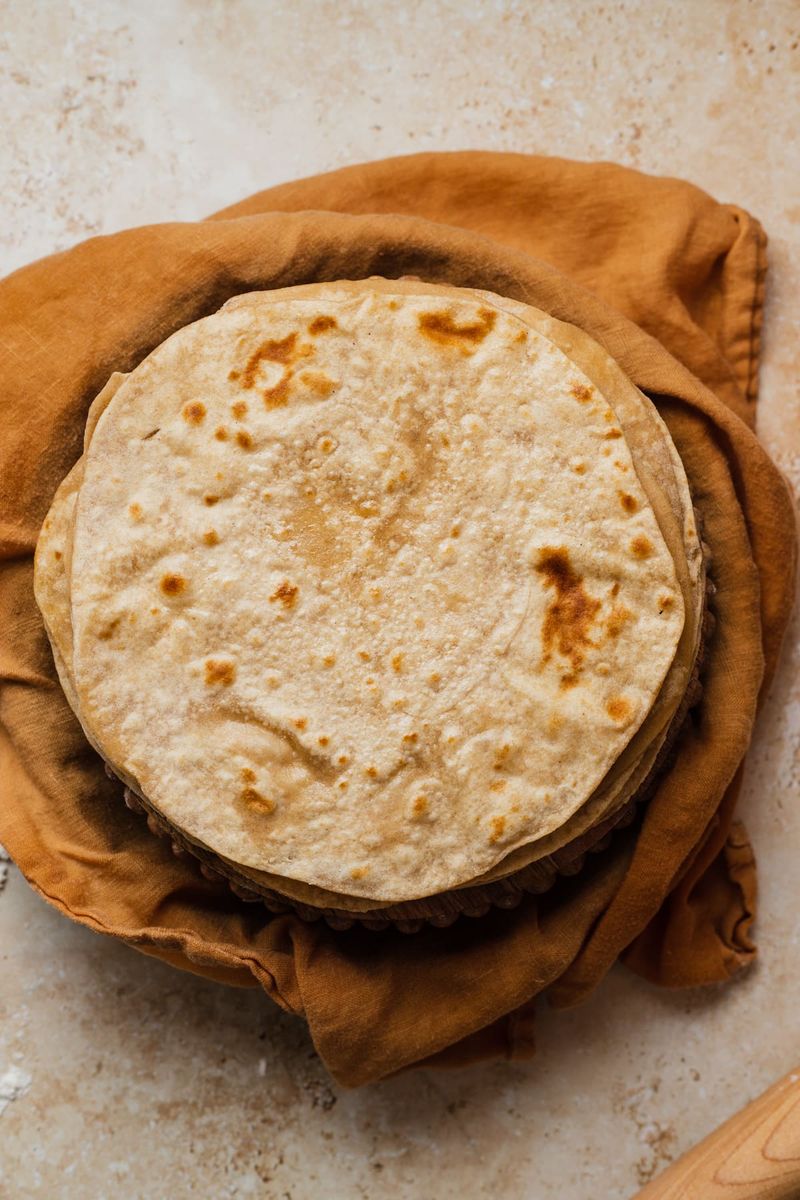
Chapati is a simple, hearty flatbread that’s a staple in East African and Indian cuisines. Made from whole wheat flour, its soft texture and mild flavor make it perfect for scooping up sauces and stews. The art of making chapati involves skillful rolling and cooking, a testament to time-honored traditions. Often enjoyed fresh off the griddle, chapatis bring a touch of warmth to any meal. Their role in daily dining highlights their importance in both cultural and culinary contexts. Chapati’s versatility and wholesome taste make it a beloved choice in many households.
33. Bannock (Indigenous North America/Scotland)
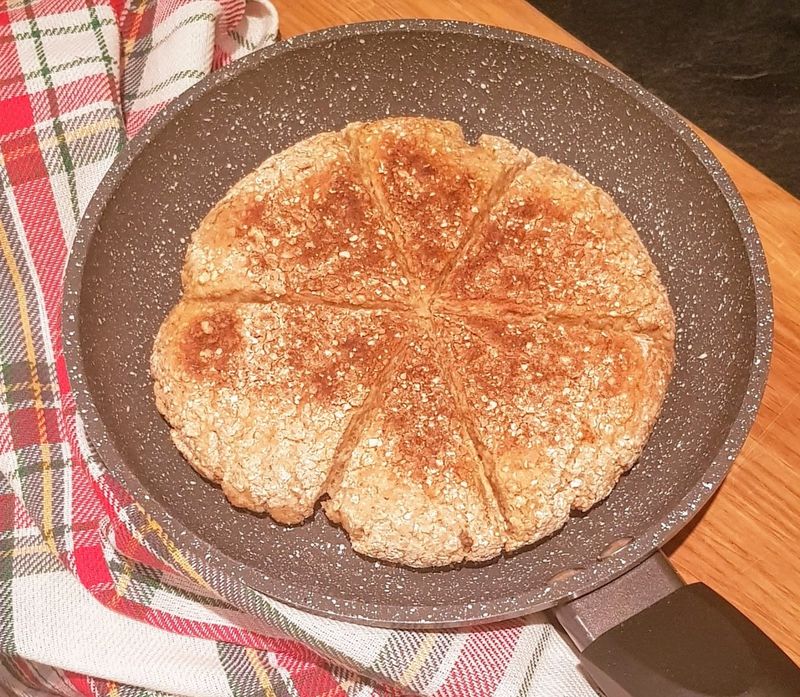
Bannock is a hearty, rustic bread with deep roots in Indigenous North American and Scottish cultures. Whether fried or baked, its satisfying bite and simple ingredients make it a versatile classic. Often enjoyed with jams, meats, or as a side dish, bannock’s adaptability is its strength. This bread’s cultural significance lies in its history and the way it brings people together. Its preparation methods vary, reflecting the diverse traditions it embodies. Bannock’s comforting taste and rich heritage make it an enduring favorite among those who appreciate soulful, uncomplicated foods.
34. Hokkaido Milk Bread (Japan)
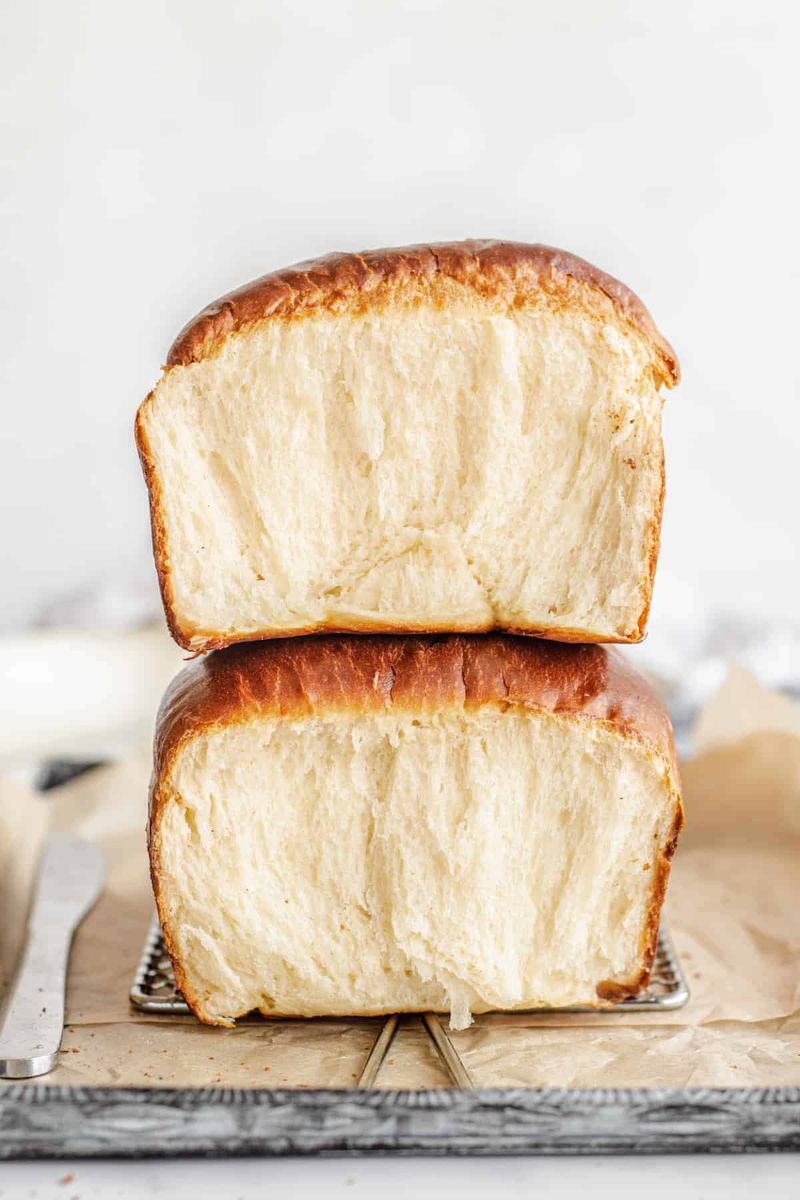
Hokkaido Milk Bread is Japan’s cloud-like loaf, celebrated for its incredibly soft and fluffy texture. Slightly sweet, it’s perfect for toast, sandwiches, or snacking. The secret lies in a unique starter called tangzhong, which enhances both texture and longevity. This bread’s gentle sweetness and tender crumb make it a beloved choice in Japanese households. Its adaptability to sweet or savory toppings adds to its charm. Hokkaido Milk Bread’s light, airy quality and exquisite taste capture the essence of Japanese baking artistry, making it a must-try for bread enthusiasts worldwide.
35. Damper (Australia)
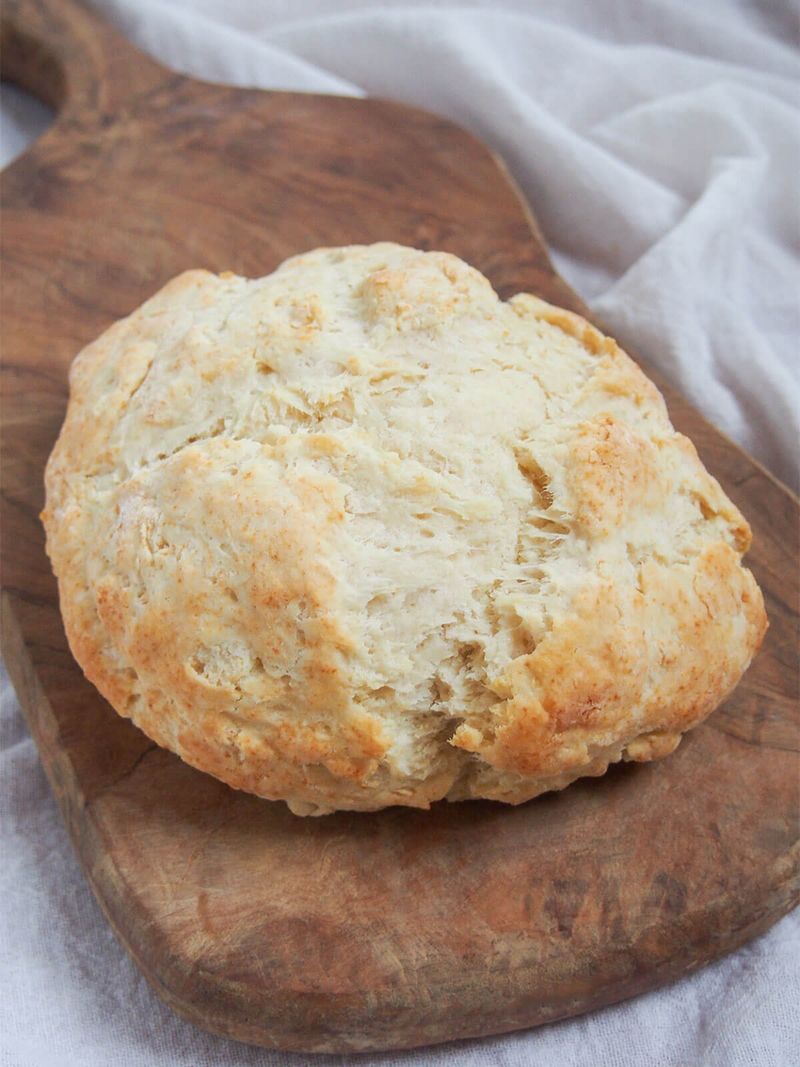
Damper is Australia’s iconic bush bread, traditionally made with flour and water and baked over coals. Its simplicity and rustic charm capture the spirit of the Australian outback. This bread’s comforting, dense texture makes it perfect for enjoying fresh and warm, often with a touch of butter. Damper’s origins as a staple for travelers and settlers highlight its practical nature. Whether enjoyed around a campfire or at home, its role in Australian culture is significant. Damper’s straightforward preparation and satisfying taste make it a beloved part of Australian culinary history.
